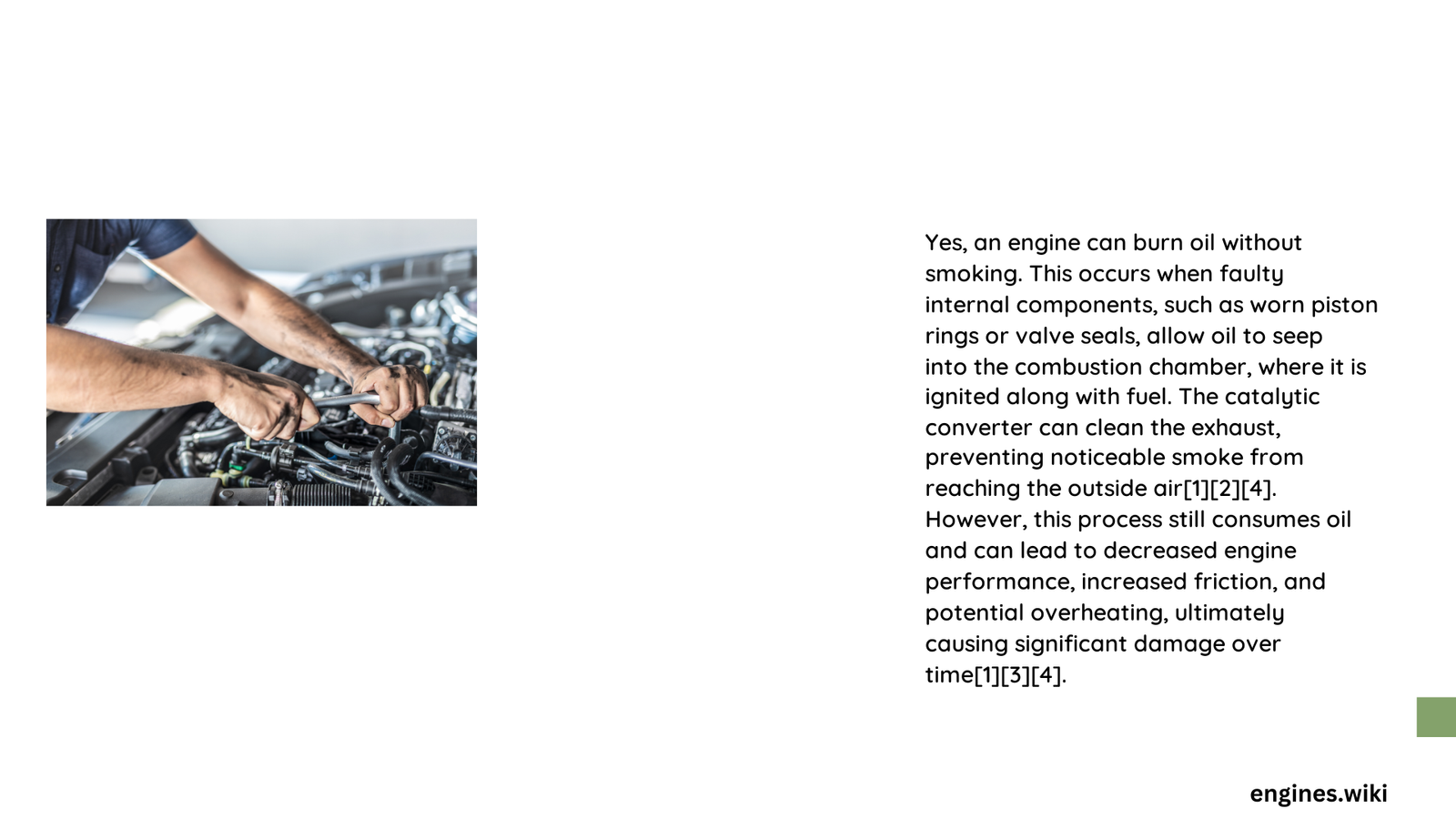Modern engines can silently consume oil without producing visible smoke, a phenomenon that puzzles many vehicle owners. This complex process involves intricate mechanical interactions where oil enters combustion chambers through worn components like piston rings and valve seals, getting burned without generating noticeable exhaust smoke. Understanding these subtle mechanisms is crucial for maintaining engine health and preventing potential long-term damage.
What Causes Oil Burning Without Visible Smoke?
How Do Piston Rings Contribute to Silent Oil Consumption?
Piston rings play a critical role in preventing oil from entering combustion chambers. When these rings wear down, they create microscopic passages allowing oil to seep into cylinders. This oil gets burned during combustion without producing substantial smoke, primarily due to:
- Advanced catalytic converter technologies
- Precise engine engineering
- Minimal oil quantities entering combustion zones
| Component | Oil Consumption Impact | Wear Indicators |
|---|---|---|
| Piston Rings | High | Compression loss |
| Valve Seals | Moderate | Blue exhaust tint |
| Cylinder Walls | Variable | Increased oil consumption |
What Mechanisms Enable Smokeless Oil Burning?
Several sophisticated mechanisms enable engines to burn oil without generating visible smoke:
- Catalytic Converter Filtration
- Breaks down oil particles
- Reduces visible exhaust emissions
-
Masks oil consumption symptoms
-
Modern Engine Design
- Tighter manufacturing tolerances
- Advanced materials
- Improved combustion efficiency
How Much Oil Consumption Is Considered Normal?
Oil consumption varies across different engine types:
- Gasoline Engines:
- Acceptable range: 1 quart per 3,000-5,000 miles
-
Newer models: Less than 1 quart per 5,000 miles
-
Diesel Engines:
- Higher consumption rates
- Acceptable range: 1-2 quarts per 5,000 miles
What Are Subtle Signs of Oil Burning?
Detecting oil consumption without smoke requires careful observation:
- Unexplained oil level drops between changes
- Slight bluish exhaust under heavy acceleration
- Increased engine temperature
- Reduced fuel efficiency
How Can Owners Diagnose Silent Oil Consumption?
Diagnostic techniques include:
- Regular oil level monitoring
- Compression tests
- Leak-down tests
- Professional diagnostic scanning
- Tracking mileage-based oil consumption rates
Can Preventive Maintenance Reduce Oil Burning?
Proactive strategies help minimize oil consumption:
- Regular oil changes
- Using manufacturer-recommended oil grades
- Addressing minor wear early
- Avoiding extended idle periods
- Maintaining consistent engine temperatures
Conclusion

Understanding how engines can burn oil without smoking requires technical knowledge and attentive maintenance. While modern engineering minimizes visible symptoms, owners must remain vigilant about potential underlying issues.
